Summer is here and the time is right for cycling in the street. Not only is it cheaper, better for you and more exhilarating than almost every other mode of transport we can think of, it will also help you do your bit to save the planet. And if you’re not convinced right now you will be once you’ve got through our bank holiday A to Z.
Anger For something as pleasant and environmentally friendly and cost-efficient, cycling generates a lot of anger, with cars and bikes – or at least those who propel them – forever at loggerheads. Motorists moan about cyclists and their ignorance of the rules of the road, while cyclists appear convinced ignorant motorists drive with zero thought for the safety of the two-wheelers.
As both a cyclist and a motorist, Pricewatch ascribes to neither view. There are good and bad cyclists and there are good and bad motorists. We have not always been immune to irrational anger, mind you, and sometimes it has come with mortifying results. Once we found ourselves cycling down a sunny Dublin street, in flying form, until a taxi honked at us. Rather than looking to see what was causing the commotion, we instantly started gesticulating wildly with a select number of fingers. Then the driver pulled up alongside us and said he had merely been alerting us to the fact that our wallet was dangerously close to falling out of our back pocket, finishing with the words “you f**king muppet”. He was right.
Bike Bunkers Dublin City Council is not short of critics but it deserves praise for its pro-cycling initiatives of recent years. There are more and better cycle lanes around the city, the Dublinbikes scheme is brilliant and we love the idea of – if not necessarily the look of – the bike bunkers popping up around the city. They are not the prettiest of things and the waiting list to get a spot can be as long as a year, but the safe spaces do allow you to stow a bike secure and dry close to your homes, and a space is well worth the €100 per year it costs to rent if you live in a small house.
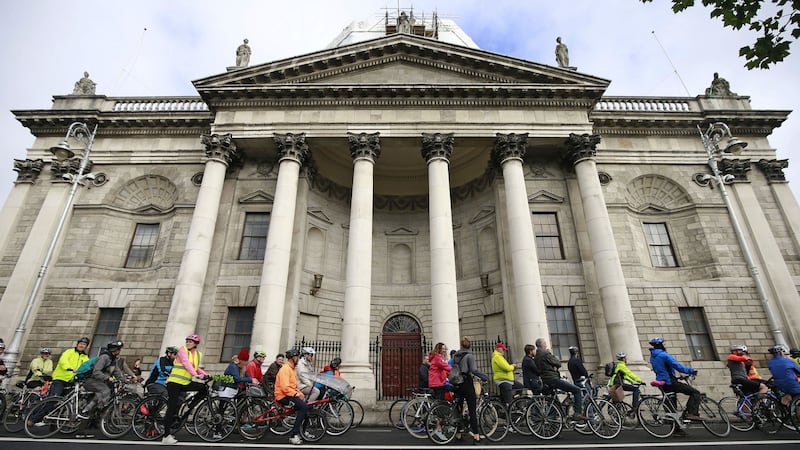
Congestion It is hard not to feel at ease with the world as a cyclist when you glide down a road snarled up with cars inching forward bumper to bumper. While successive lockdowns have stripped our urban space of its normal traffic, we still remember what it was like in pre-Covid times. A study from a couple of years back declared Dublin to be one of the worst cities in the world to be a driver, with commuters spending almost 250 hours in cars each year travelling at less than 10km/h at peak times. Even a slow cyclist will go twice as fast. There are no traffic jams on your bike and you can always get to your destination relaxed and happy and on time. Oh, and you don't have to find or pay for a parking space.
Death defying We are not going to say cyclists live forever but they do appear to have a better shot at long and healthy life than people who turn their noses up at two wheels. According to one report from the Lancet, cyclists are slimmer and likely to live longer than car-driving counterparts. The study looked at biological data from more than 150,000 people across the UK and studied the wellbeing of half a million others aged between 40 and 69, after which scientists were in a position to definitively state that getting on your bike is simply better for you. Men who cycle to work weigh an average of 5kg less than those who drive, while the average woman cyclist weights 4.4kg less than women who commute by car.
And there’s more. A slow cycle at just 15km/h burns about 400 calories in 60 minutes. Pick up the pace and cycle at 22km/h and you will shed 700 calories. Cycling dramatically increases your aerobic fitness, reduces the risk of heart disease and strokes and lowers your blood pressure and your cholesterol, while boosting your energy levels. And because it is a low-impact exercise you can do it until you are 110. If you don’t believe the Lancet, ask the Danes. Research in that country has shown that its cycling citizens live seven years longer than its non-cycling people.
Equality Fun fact time. The bike has always been a most egalitarian device and it played a big role in the struggle for gender equality. Towards the end of the 19th century, women took to their bikes in big numbers. Out of necessity they had to modify the clothes they wore, so out went ridiculous big-hooped dresses and in came bloomers – much to the chagrin of menfolk, incidentally. But the bike did more than that. It also gave women a huge degree of independence and allowed them to travel greater distances faster without relying on men. In the words of US reformer and activist Susan B Anthony, "Woman is riding to suffrage on the bicycle."
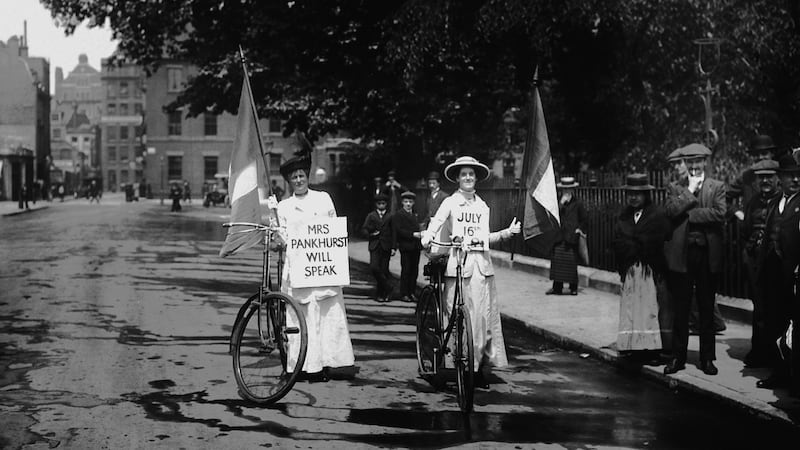
Financing More than €240 million has been allocated for cycling and walking projects around the State, almost half of which will be spent in Dublin. The work will principally involve the reallocation of road space from motorists, which will include segregated cycling lanes and widened footpaths, cyclist parking, raised pedestrian crossings and reducing road width at crossing points. The four Dublin local authorities will get about €119 million, with almost €50 million to be spent by Dublin City Council alone.
Greenways They are popping up from sea to shining sea and make the world of leisure cycling all the better. The Government has invested substantially in them and has plans to invest more. They are good for local economies and they are good for the people cycling the routes.
Helmets The topic of the bicycle helmet is surprisingly controversial, as we discovered when we once suggested they were a good idea. Who could disagree, we thought. Loads of people, as it turned out, with a vocal school of thought that believes helmets do little to protect cyclists from cars, and the act of wearing them moves the responsibility from the drivers to the cyclists. We have spoken to doctors and nurses who work in A&Es around the country who are of a very different view. And we take what they say on board. Ultimately, our measure is: would we allow our children cycle without a helmet? And the answer is absolutely no way.

Increases An Ipsos MRBI poll conducted between February and May last year showed the number of people out cycling rose by 51 per cent to 510,000. Research carried out by AIB showed bike sales increased by 49 per cent last May and by 70 per cent in June.
Juiced We have seen more and more electric bikes around the place. Now while part of us thinks, "would ye not just use your own power, lads?",we can see the appeal for longer journeys, and if electric bikes widen the radius people feel comfortable cycling then we are all for it.

Kleptomania In the five years up to 2008, when the Bike to Work scheme was introduced, about 3,000 bike thefts were reported each year. The scheme resulted in a boom in bike sales – especially expensive bikes – and thefts then doubled, to 6,000 per year by 2013. Between 2014 and 2019, bike thefts were within a range of between 5,200 and 6,000 per year. Recent figures obtained by our Crime Editor, Conor Lally, show bike thefts increased by 7 per cent in the first nine months of 2020 despite the Republic practically shutting down due to Covid-19 and every other property-related crime plummeting. Dublin Cycling Campaign research has shown only one in four bike thefts are reported to the Garda, meaning the real number of bikes stolen each year is at least 20,000. Only 1 per cent of thefts result in a conviction.
Locks So, bikes get stolen but you can do your bit to make life harder for the thieves. Your aim should not be to make your bike impossible to rob but to make it harder to rob than the bike next to it. First of all, do not spend a tenner on a lock that a bike thief will be able to snip in less than a second – you are just wasting your money. Look for brands such as Abus and Kryptonite. And be prepared to spend at least €40 on a lock. Ideally, you will have two locks: a D lock and a coil lock. A casual bike thief might have a bolt cutter – to snip coil locks – or hammer or angle grinder for a D lock, but only the most serious bike thief will carry both. Also, don't leave your bike parked in the same spot every day – move it to other locations and try and park it beside the fanciest bike on the block.
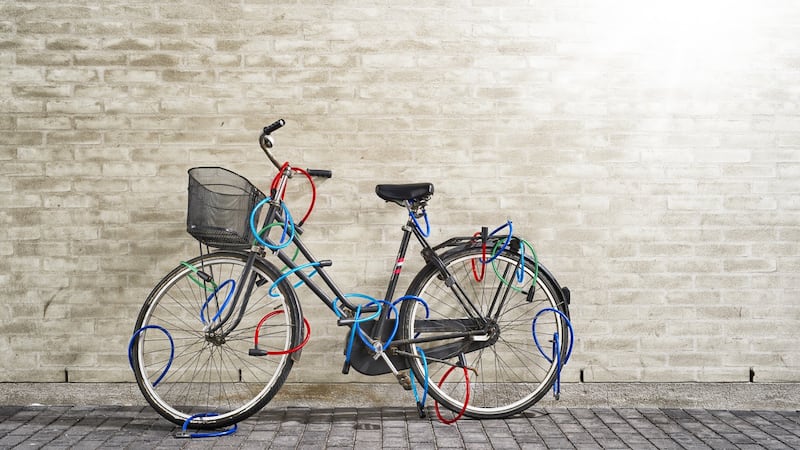
Mamils It is too easy to slag off people in cycling gear which, let's face it, is not the most flattering of apparels. But if it makes you feel better and fitter, then who are we to judge?
Night vision You don't have it and nor does anyone else, which is why you should always have lights on your bike. They have come a long way since Pricewatch were a lad and lights weighed more than the bikes they were attached to. Cateye loop lights are bright, neat and fit easily into a pocket or bag. They are fitted with powerful LEDs that are visible from many angles and are looped around the front or rear of a bicycle, so no brackets are required. They can by bought in any bike shop for about €15. Mounted cateye lights are also popular. Typically, these have wider beams and will run for as long as 80 hours on constant mode and up to 320 hours on flashing mode. Some can be recharged through a USB cable while you sit at your desk. There is literally no excuse not to have lights on your bike anymore.
Obvious It's the only word to describe the benefits of cycling. It is a wonder everyone doesn't own a bike.
Paths One of the biggest gripes people have against cyclists is their tendency to cycle on footpaths. Please do not do this. It is dangerous and will make you wildly unpopular with pedestrians and give people a stick to beat the whole cycling community with.
Quality air A car that commutes just 8km to and from work every day generates a tonne of noxious gases over the course of its life, not including all the pollution generated by its production and all the plastic and rubber required to keep it going. Bicycles are virtually carbon-neutral.
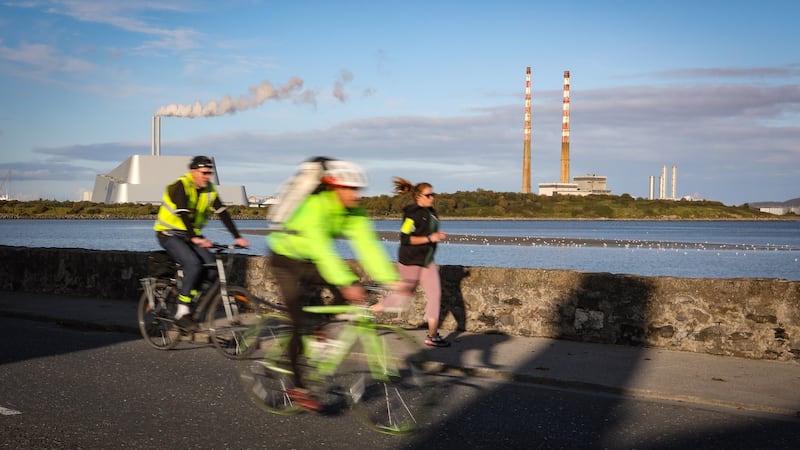
Rules The rules of the road apply to cyclists. Always remember that. While the temptation to break lights or weave in and out of pedestrians at junctions is always there, just stop and watch the world go by for a bit.
Savings When it comes to saving a few bob – or thousands of euro – on going from A to B, it is hard to beat a bike. If your commute is just 8km each way and you usually drive, then you will travel 3,760km to and from work over the course of a year. If your car has a fuel consumption rate of 9.5 litres per 100km, then you will use about 370 litres of fuel on your commute each year.
According to the AA people , the average price of a litre of fuel last week was just under €1.39, which means the cost of a commute in a car comes in at €514. Add €300 to cover tyres, servicing and repairs and the total cost is €814 each year. A bike good enough for the daily commute will cost anywhere between €250 and €500. Add the cost of the lights (€25), helmet (€35), rain gear (€100), and lock (€50), and you will spend about €600, which falls to €300 if tax breaks are factored in. Spread over five years, the annual cost is €60 – or €754 less a year than driving. So, someone who decided to ditch the car in favour of the bike for a commute will save €3,770 between now and 2026, which is the cost of a pretty fancy holiday, presuming we will be allowed to take holidays overseas at some point in the future.
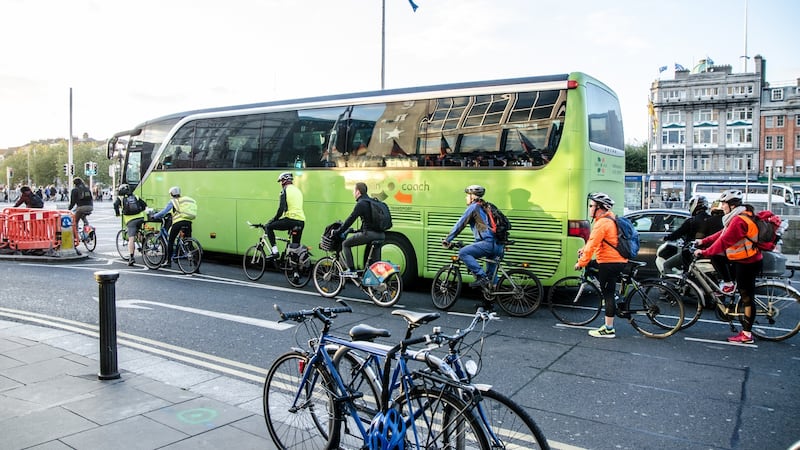
Tax back We should all be eternally grateful to the Green Party for rolling out the Bike to Work tax-back scheme almost 15 years ago. The idea was pleasingly simple. Your employer buys you a bike, you pay it back in the form of a salary deduction over 12 months and effectively pay about 50 per cent less than the full price because it is tax-free. The Greens are back in Government and that can only be good news for cyclists. As part of a stimulus package introduced last year, when the Greens got back into office, the tax incentive, which had previously been capped at €1,000, was raised to €1,250 for non-electric bicycles and €1,500 for pedal-assist electric bicycles.
Ubiquitous That's what bikes are in the Netherlands, the most cycle-friendly country in the world – even though the weather is hardly beautiful year-round. All told, the 17 million people who live there own 22.5 million bicycles, which means each person has 1.3 bikes. Mind you, the Netherlands is an easy place to cycle and not just because it is flat. The Dutch have 33,000km of dedicated cycle paths ad 55,000km of cycle lanes on roads.
Vision The Danes have had lots of it over the last five decades as they have sought to move their people out of their cars by creating a more bike- and pedestrian-friendly world. In the 1960s Copenhagen was as congested with cars as any other city in the world. But then the authorities decided to refocus their planning endeavours. Streets were blocked off to cars, cycle lanes were installed – 12,000km of them in fact – bike bridges were built and traffic lights were reconfigured to favour cyclists over cars. Unsurprisingly, it worked, and now more than 50 per cent of Copenhagen residents use a bike as their main form of daily transportation, with most agreeing that it is the fastest way to get from A to B while also being better for the environment and their health. Car congestion is no longer much of a problem in Copenhagen any more either.

Weather You are not likely to get soaked on the bike. If you live on the drier east coast of the country and cycle to and from work every day, you will only get rained on four days out of 100. The odds of getting wet are probably increased if you live in Dingle or Galway – but wet gear has come on in leaps and bounds in recent years. Don't buy cheap rain gear – as with the locks, you are just wasting money when you do. Rain gear you can buy for less than €20, it will not stand up to a downpour. An Endura Gridlock waterproof jacket costs anywhere between €50 and €60. It is breathable and made with a lot of fluorescent material for enhanced night-time visibility. The same brand makes leggings too. They are easy to get on and off, have zipped pockets, reflective elements and are very waterproof and breathable. Be prepared to spend at least €50 on a pair.
BMX They were brilliant all the same, although the child Pricewatch was never fortunate enough to have one despite pleading with Santa Claus on many occasions. We had to make do with a poxy Raleigh 18 instead, which – despite its go-faster orange colour – was, frankly, useless for doing stunts. It is a wonder we still cycle after that early heartache.
Young It is what you will stay longer if you cycle rather than drive everywhere.
Zoom No, not the increasingly tiresome way to have table quizzes and meetings, but the best word to describe the way people can travel on a bike.











